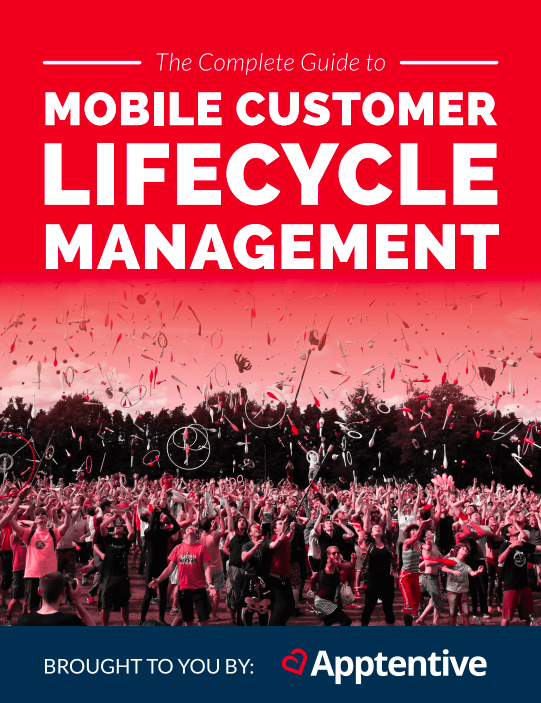Mobile requires an entirely new set of rules and best practices to help shape a strong customer lifecycle. The mobile experience includes channels and opportunities that don’t exist in the desktop world, so there are different engagement opportunities to consider when working with mobile customers.
In short, mobile customer lifecycle marketing focuses on the interactions people have with your company as a whole, rather than segmented by each stage of a funnel. It treats the customer journey as a holistic experience, rather than a fragmented one with different strategies taking hold at each stage.
To start, let’s look at the mobile customer lifecycle below.
The mobile customer lifecycle has many of the same characteristics as traditional customer lifecycles, with one big difference: engagement points for customer-centric outreach.
While traditional desktop experiences provide few chances for customer engagement, mobile devices allow for personalized, non-intrusive outreach that desktops can’t match. The data collected from mobile users enables marketers to adopt a more personal strategy, leading to opportunities for proactive and relevant engagement throughout the customer’s journey, ultimately enhancing the overall customer experience.
You can use mobile customer lifecycle marketing to:
- Improve your mobile customer journey
- Understand how different channels influence customer segments
- Track lifetime customer value
- Drive engagement and monetization
- Improve app ratings and reviews
- Identify fans and detractors
- Learn where to allocate your resources
- Gather more feedback from mobile customers
- Build a better product based on customer feedback
- Select better tools for your strategy
- Improve your product and marketing messaging
Learn more about mobile customer lifecycle management with our new guide
In our updated guide, The Complete Guide to Mobile Customer Lifecycle Management, we explore various elements of the mobile customer lifecycle to assist you in redefining your goals and modifying your strategy to focus on customers. We provide practical tips throughout to inspire you to consider what changes you can make, along with a plan to implement those changes in your business right away.
This 82-page, free resource breaks down mobile customer lifecycle management into eight categories:
- How to Create a Mobile Customer Journey Map
- Understand and Measure Lifetime Value (LTV)
- Why Retention Matters
- 4 Ways to Proactively Engage with Customers
- Identify and Activate Your Mobile MVPs
- Predict the Future with Feedback and Customer Sentiment
- The 7-Step Customer Centricity Checklist
- Select the Right Tools
Understanding the mobile customer lifecycle is a crucial part of setting a solid marketing strategy in today’s marketplace. The more we treat the mobile customer journey as a holistic experience rather than a fragmented one with different strategies taking hold at each stage, the better overall experience we can offer our customers.

